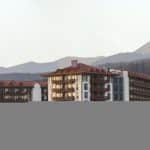The world is slowly but steadily shifting towards sustainable practices across various sectors, and the real estate industry is no exception. Real estate projects are now focusing on incorporating green building strategies to optimize the use of natural resources like sunlight and wind. This approach not only mitigates the impact of construction on the climate but also provides numerous benefits like energy efficiency and cost savings. Here are a few key strategies that can be applied to real estate project designs to harness natural resources optimally.
Passive Solar Design
The concept of passive solar design involves using the sun’s energy for the heating and cooling of living spaces. By integrating this design principle into real estate projects, it is possible to significantly reduce the consumption of non-renewable sources of energy.
Sujet a lire : What strategies can be employed to design real estate projects that adapt to changing climate conditions and extreme weather events?
Passive solar design is achieved by strategically placing windows, walls, and floors to collect, store, and distribute solar energy in the form of heat in winter and reject solar heat in summer. It uses building elements such as the roof overhangs to shade the interior spaces during summer while allowing sunlight in winter to warm the interior.
Moreover, using materials that have excellent thermal mass, such as concrete or bricks, can store the heat during the day and release it at night, thus maintaining a comfortable indoor temperature. By implementing passive solar design, you can minimize the use of artificial heating and cooling systems, leading to substantial energy savings.
A lire en complément : How Can Real Estate Development Contribute to Urban Wildlife Conservation?
Wind Energy Systems
Another strategy to optimize natural resources in real estate projects is the use of wind energy systems. These systems can effectively harness the wind to generate electricity, reducing the building’s reliance on traditional power sources.
Depending upon the location and wind conditions, small wind turbines can be installed on the buildings or properties. These turbines convert the kinetic energy from the wind into mechanical power, which can be used directly for pumping water or converted to electricity.
Wind energy is a clean, green, and renewable source of energy. It can significantly cut down on energy bills, reduce carbon emissions, and promote a sustainable and efficient way of living.
Water Conservation Systems
Water is a crucial resource that needs to be utilized optimally in real estate projects. Incorporating water conservation systems in the design of buildings can greatly decrease water consumption and waste.
Rainwater harvesting is one such system that collects and stores rainwater for later use. This water can be used for irrigation, flushing toilets, washing cars, and other non-drinking purposes. Greywater systems, which recycle water from sinks, showers, and laundry, can be used for similar purposes, reducing the demand for fresh water.
Installing low-flow fixtures and dual-flush toilets can also reduce water consumption significantly. These fixtures and appliances use less water than standard models, helping to save water and cut down on water bills.
Energy-Efficient Materials and Construction Practices
The choice of building materials and the construction process also play a crucial role in optimizing natural resources. Using energy-efficient materials, including insulation and energy-efficient windows, can help reduce the need for artificial heating and cooling.
Insulation prevents heat from escaping during winter and entering during summer, maintaining a comfortable indoor temperature. Energy-efficient windows, on the other hand, reduce the amount of heat that comes in through the windows, reducing the need for air conditioning.
Moreover, construction practices such as prefabrication and modular construction can reduce waste and energy consumption. In these processes, building components are manufactured off-site and then assembled on-site, leading to more efficient use of materials and less waste.
Green Spaces and Landscaping
Finally, integrating green spaces and effective landscaping into real estate project designs can contribute to energy efficiency and sustainability. Landscaping elements such as trees and shrubs can provide shade and reduce the need for air conditioning.
Green roofs and walls, covered with vegetation, offer insulation, reduce the urban heat island effect, improve air quality, and manage rainwater. They also provide habitats for birds and insects, contributing to biodiversity.
Not only do these strategies optimize the use of natural resources, but they also create healthier and more comfortable living spaces. By incorporating these strategies into your real estate projects, you can contribute to a more sustainable and resilient built environment.
Renewable Energy Integration
In recent years, the integration of renewable energy systems in real estate projects has emerged as a popular strategy for optimizing natural resources. Renewable energy, which includes solar, wind, and geothermal power, can be harnessed on-site to provide power for buildings. By tapping into these energy sources, buildings can reduce their reliance on conventional, non-renewable sources of power.
One common method of renewable energy integration is the installation of solar panels. Solar panels capture sunlight and convert it into electricity that can be used to power a building’s energy systems. This not only contributes to energy efficiency but also results in long-term cost savings, as solar power is essentially free once the panels are installed.
Geothermal energy, another renewable energy source, can be used for heating and cooling. A geothermal heat pump system uses the stable temperature of the earth beneath the ground as a source for heating and cooling. This system can significantly reduce energy consumption, as it requires less energy to heat or cool the air compared to conventional systems.
By incorporating renewable energy systems into real estate projects, property owners can create eco-friendly buildings that contribute to climate change mitigation and promote sustainable energy use.
Building Orientation and Design
The orientation and design of a building play a significant role in optimizing natural resources. The building orientation can impact the amount of sunlight and wind the building receives, which can affect its energy efficiency.
For instance, in the Northern Hemisphere, a south-facing orientation can enable a building to capture maximum sunlight during the winter while minimizing sun exposure in the summer. This passive solar strategy can reduce energy consumption for heating and cooling.
Moreover, the building design itself can also contribute to energy efficiency. For example, a design that incorporates large windows can allow natural light to penetrate the building, reducing the need for artificial lighting during the day. Similarly, a design that promotes natural ventilation can reduce the need for mechanical cooling systems.
Utilizing building orientation and design to optimize natural resources not only contributes to energy efficiency but also creates comfortable and pleasant living spaces for occupants.
Conclusion
With the mounting concerns over climate change and resource depletion, it has become more critical than ever for the real estate industry to adopt sustainable practices. By harnessing natural resources such as sunlight, wind, and water, real estate projects can contribute to sustainability, promote energy efficiency, and generate significant cost savings in the long term.
The strategic use of renewable energy, energy-efficient building materials, passive solar design, sustainable landscaping, and water conservation systems can all contribute to the creation of green buildings. These strategies not only reduce a building’s carbon footprint but also enhance the quality of life for its occupants.
Property owners, architects, and builders who invest in these green building strategies can expect to reap significant rewards. Not only can they look forward to reduced operating costs, but they can also attract eco-conscious tenants and buyers. More importantly, they can take pride in knowing that their real estate projects are contributing to a more sustainable and resilient future.











